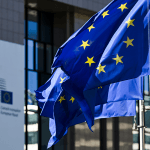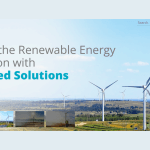ADB, IAEA Form Alliance to Guide Safe Nuclear Deployment in Asia Pacific

• ADB and the IAEA sign a formal cooperation framework to guide safe, sustainable nuclear deployment, including small modular reactors, across developing Asia-Pacific economies.
• The agreement follows ADB’s updated energy policy, which now recognizes nuclear power as a baseload option alongside its climate and energy security ambitions.
• The partnership strengthens technical capacity, governance, safeguards, and decision-making for countries exploring nuclear pathways.
A New Era of Nuclear Governance and Finance
The Asian Development Bank and the International Atomic Energy Agency have formalized a partnership aimed at shaping how nuclear power enters the next phase of Asia-Pacific’s energy transition. The memorandum of understanding, signed in Manila by ADB President Masato Kanda and IAEA Director General Rafael Mariano Grossi, creates a structured collaboration that combines ADB’s financing and governance reach with the IAEA’s technical authority.
It is the first agreement of its kind between the IAEA and a regional development bank, and it comes at a moment when several emerging Asian economies are weighing nuclear power as a hedge against volatile fuel markets, rising electricity demand, and decarbonization pressures.
“With ADB’s updated energy policy recognizing nuclear power as an alternative to fossil fuels for baseload generation, this agreement ensures that developing member countries choosing this path do so with robust safeguards, strong governance, and a clear commitment to sustainability,” Mr. Kanda said. “We are committed to helping the region make informed choices that balance the need for energy access with the imperative of energy security and a sustainable future.”
Expanding Access to Nuclear Options, Including SMRs
The partnership lays out support for governments evaluating nuclear energy, from early planning to long-term project governance. This includes advisory work on next-generation technologies such as small modular reactors, which several economies view as potential complements to renewable expansion, rural electrification, and grid reliability efforts.
According to the agreement, both institutions will work with countries to assess nuclear feasibility within national energy strategies, strengthen regulatory systems, and incorporate best-practice controls across the fuel cycle and waste management. The IAEA’s role includes providing safety, security, safeguards, and stakeholder-engagement guidance to ensure decisions are grounded in international standards.
“Today’s agreement marks an important step forward. As ADB opens the door to financing nuclear power, we will move quickly to identify practical areas of collaboration that respond to rising energy needs of countries across the region,” Mr. Grossi said. “ADB’s new direction on nuclear financing and the IAEA’s technical leadership create a powerful combination. Our teams will now begin shaping concrete initiatives that deliver reliable, low-carbon energy and strengthen resilience for millions of people.”
Governance, Risk, and Regional Priorities
The shift is notable in a region where governments must manage rising climate exposure, constrained fiscal space, and the need to diversify power systems. For C-suite and investor audiences, the partnership signals that future nuclear development in Asia-Pacific will be tied to governance credibility, transparent decision-making, and higher expectations around operational risk management.
ADB’s involvement is especially significant given its historic stance on nuclear projects. By updating its energy policy and aligning with the IAEA, the bank is giving developing members a coordinated framework to evaluate nuclear alongside renewables, gas-transition strategies, and grid investments. The agreement places safeguards and public-engagement requirements at the center of project preparation, positioning nuclear not as a standalone solution but as one possible component of broader security and decarbonization portfolios.
Beyond Energy: Collaboration Extends to Plastics and Ocean Health
Before the signing ceremony, Mr. Kanda addressed the International High Level Forum on Nuclear Technology for Controlling Plastic Pollution, known as NUTEC Plastics, attended by Philippines President Ferdinand Marcos Jr. His remarks highlighted that the ADB–IAEA relationship extends beyond electricity systems. Both institutions are collaborating on initiatives that use nuclear science to protect ocean health and to address the region’s accelerating microplastics crisis.
This linkage matters for policymakers seeking to integrate environmental priorities across ministries. It also suggests that nuclear cooperation—often viewed solely through the lens of reactors and grid systems—can serve wider sustainability agendas.
RELATED ARTICLE: EMA and Asian Development Bank Partner to Promote Clean Energy
Technical Capacity and Long-Term Lifecycle Management
Under the new framework, ADB and the IAEA will coordinate on capacity building across the full nuclear lifecycle. This includes early-stage planning, fuel-cycle oversight, radioactive-waste strategies, and long-term asset management. The aim is to build institutional capability that persists beyond political cycles and withstands shifts in energy markets.
For investors, this reflects a maturing approach to nuclear governance in Asia-Pacific. Countries exploring these pathways will have access to structured support on regulatory architecture, financial planning, and risk controls, reducing uncertainties that have historically complicated nuclear investment.
Regional and Global Significance
Asia-Pacific’s electricity demand is projected to continue rising at one of the fastest rates globally. For many governments, the options to secure supply while reducing emissions are narrowing. Nuclear energy is returning to policy debates, but with sharper questions around cost, waste, public trust, and resilience in a climate-affected world.
The ADB–IAEA partnership places these issues within a more disciplined framework. It ties potential nuclear deployment to international safety rules, transparent governance, and stronger institutional capacity. It also signals to global markets that if nuclear power expands in the region, it will do so under conditions intended to manage risk, align with sustainability priorities, and support long-term climate objectives.
As the region navigates the next decade of energy demand, the partnership gives governments and investors a clearer structure for evaluating nuclear’s role in diversified, low-carbon systems—deepening the policy and technical groundwork for a transition that is increasingly shaped by energy security pressures and global climate commitments.
Follow ESG News on LinkedIn












